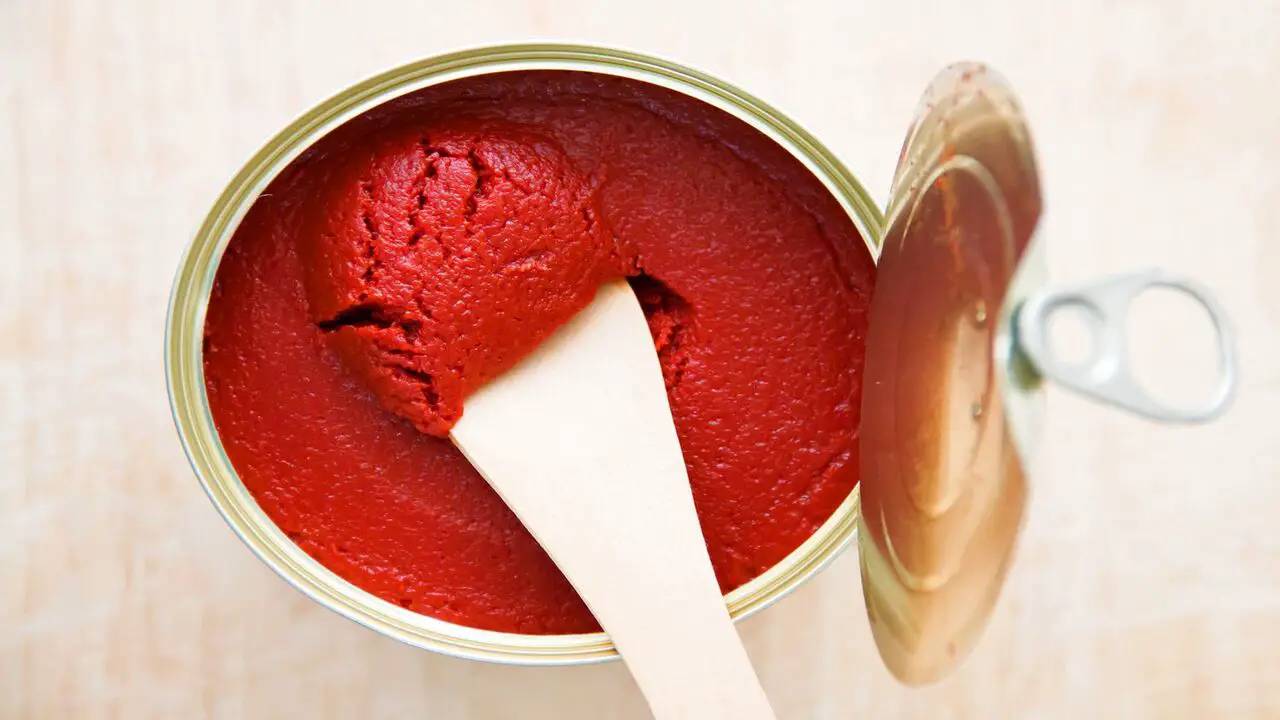Chili is a delicious and hearty dish that has become a staple in many homes. Whether you prefer it spicy or mild, with beans or without, there’s no denying that chili is a crowd-pleaser.
However, one common issue people often encounter when making chili is that it turns out too sweet. While a touch of sweetness can be a great addition to chili, too much can completely ruin the balance of flavours. If you’ve found yourself in this predicament. There are several ways to troubleshoot your sweet chili recipe and return it to its savoury glory.
Here we’ll explore why your chili too sweet and provide practical tips on how to fix it. We’ll cover everything from adjusting the sweetness level with different types of sweeteners to adding savoury ingredients to balance out the flavour profile. With our expert advice, you can create a perfectly balanced chili that will have your taste buds singing.

How To Fix Chili Too Sweet Problem To Sauce

Chili too sweet is an imbalance of flavours resulting from excessive sugar in the dish. Traditional chili recipes typically include a combination of savoury, spicy, and acidic elements, with sweetness playing a minor role, if any. When sugar overtakes these other flavours, it can dull the spiciness, weaken the tanginess, and disrupt the intended taste profile of chili.
Achieving the perfect balance is crucial for a delicious chili. To rectify the sweetness, one can add more savoury or spicy components, like salt, chili powder, and cumin, or acidic ingredients like tomatoes or vinegar, until the desired taste is restored.
1.Add More Heat:

If your chili turns out too sweet and lacks the desired heat. Several adjustments can bring back the balance of flavours. First, increase the spiciness by adding chilli powder, cayenne pepper, or fresh chopped hot peppers. Adjust the amount according to your preference for heat. Secondly, introducing acidity can counteract the sweetness; add a lime or lemon juice splash to brighten the flavours.
Additionally, consider incorporating savoury and umami elements such as garlic, onion, or soy sauce to enhance the overall taste profile. Be cautious not to add too much of any ingredient all at once; it’s best to make gradual adjustments, tasting as you go. Building flavours takes time, so be patient and adjust until you achieve the perfect balance of sweetness and heat that suits your palate.
2.Increase Acidity:
When attempting to increase the acidity of a too-sweet chili. Several ingredients can be utilized to achieve the desired balance of flavours. Adding acidic elements such as lime or lemon juice can help cut through the sweetness and bring a tangy twist to the dish. Additionally, a splash of vinegar, particularly apple cider or white vinegar, can enhance acidity without overpowering the overall taste.
Another option is to include diced tomatoes or tomato paste, which contain natural acidity that counteracts sweetness. For those who enjoy a touch of heat, incorporating a small amount of chopped fresh chili peppers can elevate the spiciness and contribute to the overall acidity. Experimenting with these ingredients in moderation will allow for a harmonious blend of flavors, achieving a well-balanced and delicious chili.
3.Use Tomatoes Or Tomato Paste:

If your chili turns out too sweet, using tomatoes or tomato paste can effectively balance the flavors. Tomatoes have a natural acidity that can help cut through the sweetness and add a tangy element to the dish. Tomato paste, being concentrated, imparts a robust tomato flavor without adding extra sweetness.
To adjust your chili, add diced or crushed tomatoes to the pot. The amount needed depends on the sweetness level and quantity of chili. If it’s a large batch, you might require a few cans. Simmer the chili to allow the tomatoes to meld with the other ingredients.
If the chili is still sweet, incorporate tomato paste gradually, stirring it in and tasting as you go. This will enrich the tomato flavor and acidity without adding excess liquid. Remember to let the chili simmer after each addition to allow the flavors to meld. With careful adjustments, your chili should transform into a perfectly balanced and delicious dish.
4.Add Savoury And Umami Ingredients:

If your chili is turning out too sweet and lacking the desirable savoury and umami flavours, there are several ingredients you can add to the balance and enhance its taste. To start, incorporate more savoury spices like cumin, paprika, and smoked chili powder, adding depth and complexity to the dish. Umami-rich ingredients like soy sauce, Worcestershire sauce, or miso paste can also work wonders in elevating the overall flavour profile.
Use beef or chicken broth instead of water for a meat-based chili to intensify the savory notes. Additionally, adding sautéed onions, garlic, and diced tomatoes can contribute to a more well-rounded taste. If you prefer a vegetarian or vegan option, mushrooms are a great source of umami and can be a fantastic addition to your chili. Remember to taste and adjust the seasonings to balance sweet, savoury, and umami flavours perfectly.
5.Increase Spices And Seasonings:
If your chili turns out too sweet, fear not, as there are several ways to balance the flavors and bring back the desired spiciness. Firstly, try incorporating more spices and seasonings. Increase the chili powder, cumin, paprika, and cayenne pepper to elevate the heat and intensity.
Consider adding a pinch of red pepper flakes for an extra kick. Additionally, balance the sweetness with acidity by including ingredients like tomatoes or a splash of vinegar.
Lime or lemon juice can also work wonders. Incorporate garlic, onion, and even a hint of smokiness with chipotle peppers or smoked paprika for a more complex flavour profile. Remember to adjust the salt levels accordingly to enhance all the flavours. Taste-test as you go, allowing the flavours to meld together over time. With these adjustments, your chili will be transformed into a perfectly balanced and delicious dish.
6.Dilution:
When it becomes too sweet, the dilution of chili is a common technique to balance the flavors and reduce the excessive sweetness. There are several ways to achieve this. One method is to add more chili, which can help counteract the sweetness with its spiciness. Additionally, acidic ingredients like lime or lemon juice can help cut through the sweetness and add a tangy flavour.
Another approach is to increase the chilli’s other savoury and umami elements. Such as adding more umami-rich ingredients like soy sauce, Worcestershire sauce, or fish sauce. These ingredients can bring out the savoury flavours and create a more balanced taste profile.
Finally, if the chili is too sweet due to added sugar or sweet ingredients, dilution can be achieved by increasing the volume of the other non-sweet ingredients, like beans, vegetables, or meat. This will spread out the sweetness and create a more harmonious overall taste. Experimenting with these methods will help achieve your chili’s desired flavour and balance.
7.Balance With Bitter Or Earthy Flavours:

When preparing chili, achieving the right balance of flavours is crucial for a satisfying culinary experience. When a chilli is too sweet due to excessive use of sweeteners like sugar or overly ripe vegetables, it can overpower and diminish the intended robustness of the dish. To rectify this, it’s essential to counterbalance the sweetness with contrasting elements such as bitter or earthy flavours.
Adding ingredients like cocoa powder, dark chocolate, or coffee can introduce pleasant bitterness that complements the sweetness and enhances the overall depth of the chili. Earthy flavours can be infused with ingredients like toasted cumin seeds, smoked paprika, or dried mushrooms. This help counters the sweetness and contributes to a more complex and well-rounded taste.
By balancing the bitter or earthy components with the sweetness, you can elevate your chili to a harmonious and flavorful dish that tantalizes the taste buds and leaves a lasting impression.
8.Correct With Salt:
Correcting your chili with salt can be an effective solution if it is too sweet. Salt enhances flavours and balances taste profiles in various dishes, including chili. Start by adding a small amount of salt and then gradually taste and adjust until the sweetness is balanced. Be cautious not to over-salt, as it can overpower the other flavours.
Additionally, you can try adding acidic ingredients like vinegar or lime juice to counteract the sweetness. These acids can help cut through the sugary taste and provide a tangy contrast. If the sweetness persists, consider adding more savoury elements like garlic, onion, or a hot sauce to add complexity and balance to the chili’s overall taste.
Remember, achieving the right balance of flavours is a matter of trial and error. Take your time, taste frequently, and make incremental adjustments until you reach the desired flavour profile for your chili.
Conclusion
Got a case of chili too sweet? With a few easy tweaks and adjustments, you can turn your overly sugary recipe into a perfectly balanced chili that will have your taste buds singing.
Whether adding a bit of acidity, dialling back the sugar, or experimenting with different spices and seasonings, there are plenty of ways to troubleshoot your sweet chili recipe and make it a winner. So don’t give up on your chili dreams just yet – with a little bit of know-how and many flavors, you’ll be well on your way to sweet (but not too sweet) success.
FAQ
1.Why Is My Sweet Chili Too Sweet?
Ans: There are several reasons why your sweet chili might be too sweet. You might have used too much sugar or sweetener in the recipe, or the sweetness of your ingredients could be higher than expected. Reducing the chili peppers or adding too much fruit can also increase the sweetness.
2.How Can I Reduce The Sweetness Of My Chili Without Making It Too Spicy?
Ans: Add a small amount of vinegar or citrus juice (e.g., lime or lemon) to your sweet chili to reduce the sweetness without excessive spiciness. These acids will help balance the sweetness without making the dish overly sour.
3.Can I Add More Water Or Broth To Dilute The Sweetness?
Ans: Adding more water or broth can dilute the flavours in your sweet chili, including sweetness, but it may not completely resolve the issue. Dilution could result in a weaker overall taste. Instead, consider adding additional savoury and acidic ingredients to restore the balance.
4.Are There Any Specific Chili Pepper Varieties That Are Less Sweet?
Yes, chili pepper varieties can vary in sweetness and heat levels. If you want a less sweet chili, consider using chili peppers like Anaheim, Poblano, or New Mexico varieties, as they tend to be milder and less sweet compared to others like the Bell or Hungarian Wax peppers.
5.Can I Add Vegetables To Balance Out The Sweetness In Sweet Chili?
Ans: Adding vegetables like bell peppers, onions, garlic, or tomatoes can help create a more well-rounded flavour profile and dilute the excessive sweetness. These ingredients can bring their own natural sweetness, but when combined with the spice and acidity of chili, they can help create a more balanced dish.
